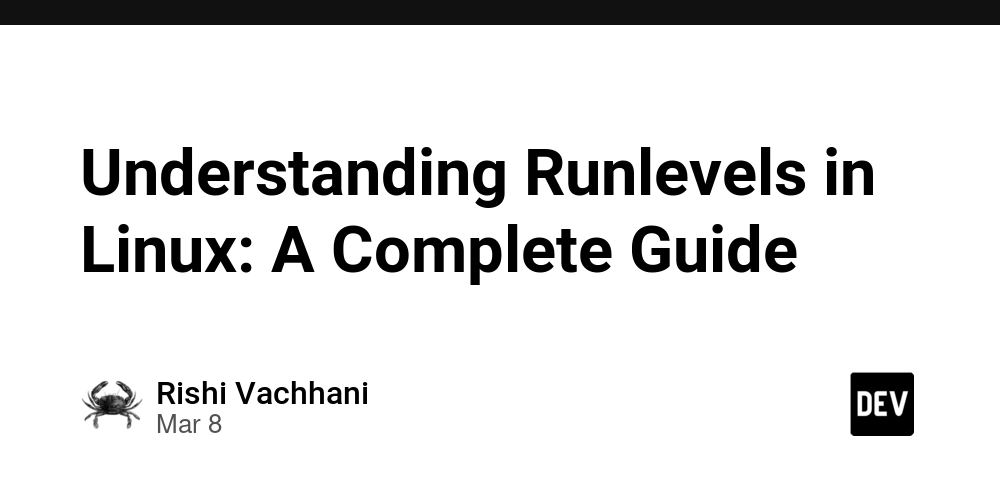Choosing Integer Types in MySQL & PostgreSQL
Choosing the right integer type depends on storage size, range, and performance. Here’s a guide to selecting the best type based on your needs. Integer Types Overview Data Type MySQL Range (Signed) PostgreSQL Range (Signed) Storage (Bytes) Best Used For TINYINT -128 to 127 (UNSIGNED: 0 to 255) ❌ Not available 1 Boolean values, small counters SMALLINT -32,768 to 32,767 -32,768 to 32,767 2 Small IDs, counts MEDIUMINT -8,388,608 to 8,388,607 ❌ Not available 3 Large counters in MySQL INT / INTEGER -2,147,483,648 to 2,147,483,647 Same as MySQL 4 Most general purpose ID or counter BIGINT -9,223,372,036,854,775,808 to 9,223,372,036,854,775,807 Same as MySQL 8 Large IDs, timestamps When to Use Each Integer Type? ✅ Use TINYINT (MySQL) when: ✔ Boolean values (0 or 1) ✔ Small flags or statuses (1-100) ✔ Example: CREATE TABLE users ( is_active TINYINT(1) NOT NULL ); ✅ Use SMALLINT when: ✔ Small numerical values, such as age, small counts, or ratings (-32,768 to 32,767) ✔ Example: CREATE TABLE products ( stock SMALLINT UNSIGNED NOT NULL -- Only positive values (0-65,535) ); ✅ Use MEDIUMINT (MySQL only) when: ✔ Larger counters than SMALLINT, but INT is overkill ✔ Example: CREATE TABLE orders ( order_count MEDIUMINT UNSIGNED NOT NULL ); ✅ Use INT / INTEGER when: ✔ General-purpose primary keys (auto-increment IDs) ✔ Larger counters (-2B to 2B range) ✔ Example: CREATE TABLE employees ( id INT AUTO_INCREMENT PRIMARY KEY, salary INT NOT NULL ); ✅ Use BIGINT when: ✔ Storing timestamps, large IDs, or very large numbers ✔ Needed for social media users, financial records, or global IDs ✔ Example: CREATE TABLE transactions ( transaction_id BIGINT UNSIGNED AUTO_INCREMENT PRIMARY KEY, amount BIGINT NOT NULL ); Should I Use SIGNED or UNSIGNED? Use UNSIGNED if you only need positive numbers (doubles the max value). Use SIGNED if you need both positive & negative values. Example: -- UNSIGNED: allows 0 to 4,294,967,295 CREATE TABLE accounts ( balance INT UNSIGNED NOT NULL ); PostgreSQL-Specific Notes No TINYINT or MEDIUMINT → Use SMALLINT or INTEGER instead. Supports SERIAL types for auto-incrementing IDs: CREATE TABLE users ( id SERIAL PRIMARY KEY -- Equivalent to INT AUTO_INCREMENT ); Choosing the Right Integer Type Use Case MySQL Type PostgreSQL Type Boolean flags (0/1) TINYINT(1) BOOLEAN Small numbers (age, ratings) SMALLINT SMALLINT Medium counters MEDIUMINT INTEGER General IDs & primary keys INT AUTO_INCREMENT SERIAL Large counters (big user base, financial data) BIGINT BIGINT Here are real-world use cases for each integer type. 1. TINYINT (1 Byte) – Small Flags & Boolean Values ** Example: User Status & Ratings** Used for binary states (0/1) or small numerical ranges. MySQL doesn’t have a BOOLEAN type, so TINYINT(1) is used instead. CREATE TABLE users ( id INT AUTO_INCREMENT PRIMARY KEY, is_active TINYINT(1) NOT NULL DEFAULT 1, -- 0 = inactive, 1 = active user_role TINYINT UNSIGNED NOT NULL DEFAULT 1 -- 1 = User, 2 = Admin, etc. ); Best for: ✔ Active/inactive status (0 or 1) ✔ User roles (1-10) ✔ Ratings (1-5 stars) 2. SMALLINT (2 Bytes) – Small Counters & Ranges ** Example: Number of Seats in a Theater** Movie theaters have up to 65,535 seats, so SMALLINT UNSIGNED is perfect. CREATE TABLE cinemas ( id INT AUTO_INCREMENT PRIMARY KEY, name VARCHAR(255) NOT NULL, total_seats SMALLINT UNSIGNED NOT NULL CHECK (total_seats

Choosing the right integer type depends on storage size, range, and performance. Here’s a guide to selecting the best type based on your needs.
Integer Types Overview
| Data Type | MySQL Range (Signed) | PostgreSQL Range (Signed) | Storage (Bytes) | Best Used For |
|---|---|---|---|---|
| TINYINT | -128 to 127 (UNSIGNED: 0 to 255) | ❌ Not available | 1 | Boolean values, small counters |
| SMALLINT | -32,768 to 32,767 | -32,768 to 32,767 | 2 | Small IDs, counts |
| MEDIUMINT | -8,388,608 to 8,388,607 | ❌ Not available | 3 | Large counters in MySQL |
| INT / INTEGER | -2,147,483,648 to 2,147,483,647 | Same as MySQL | 4 | Most general purpose ID or counter |
| BIGINT | -9,223,372,036,854,775,808 to 9,223,372,036,854,775,807 | Same as MySQL | 8 | Large IDs, timestamps |
When to Use Each Integer Type?
✅ Use TINYINT (MySQL) when:
✔ Boolean values (0 or 1)
✔ Small flags or statuses (1-100)
✔ Example:
CREATE TABLE users (
is_active TINYINT(1) NOT NULL
);
✅ Use SMALLINT when:
✔ Small numerical values, such as age, small counts, or ratings (-32,768 to 32,767)
✔ Example:
CREATE TABLE products (
stock SMALLINT UNSIGNED NOT NULL -- Only positive values (0-65,535)
);
✅ Use MEDIUMINT (MySQL only) when:
✔ Larger counters than SMALLINT, but INT is overkill
✔ Example:
CREATE TABLE orders (
order_count MEDIUMINT UNSIGNED NOT NULL
);
✅ Use INT / INTEGER when:
✔ General-purpose primary keys (auto-increment IDs)
✔ Larger counters (-2B to 2B range)
✔ Example:
CREATE TABLE employees (
id INT AUTO_INCREMENT PRIMARY KEY,
salary INT NOT NULL
);
✅ Use BIGINT when:
✔ Storing timestamps, large IDs, or very large numbers
✔ Needed for social media users, financial records, or global IDs
✔ Example:
CREATE TABLE transactions (
transaction_id BIGINT UNSIGNED AUTO_INCREMENT PRIMARY KEY,
amount BIGINT NOT NULL
);
Should I Use SIGNED or UNSIGNED?
-
Use
UNSIGNEDif you only need positive numbers (doubles the max value). -
Use
SIGNEDif you need both positive & negative values. - Example:
-- UNSIGNED: allows 0 to 4,294,967,295
CREATE TABLE accounts (
balance INT UNSIGNED NOT NULL
);
PostgreSQL-Specific Notes
-
No
TINYINTorMEDIUMINT→ UseSMALLINTorINTEGERinstead. - Supports
SERIALtypes for auto-incrementing IDs:
CREATE TABLE users (
id SERIAL PRIMARY KEY -- Equivalent to INT AUTO_INCREMENT
);
Choosing the Right Integer Type
| Use Case | MySQL Type | PostgreSQL Type |
|---|---|---|
| Boolean flags (0/1) | TINYINT(1) |
BOOLEAN |
| Small numbers (age, ratings) | SMALLINT |
SMALLINT |
| Medium counters | MEDIUMINT |
INTEGER |
| General IDs & primary keys | INT AUTO_INCREMENT |
SERIAL |
| Large counters (big user base, financial data) | BIGINT |
BIGINT |
Here are real-world use cases for each integer type.
1. TINYINT (1 Byte) – Small Flags & Boolean Values
** Example: User Status & Ratings**
- Used for binary states (0/1) or small numerical ranges.
- MySQL doesn’t have a
BOOLEANtype, soTINYINT(1)is used instead.
CREATE TABLE users (
id INT AUTO_INCREMENT PRIMARY KEY,
is_active TINYINT(1) NOT NULL DEFAULT 1, -- 0 = inactive, 1 = active
user_role TINYINT UNSIGNED NOT NULL DEFAULT 1 -- 1 = User, 2 = Admin, etc.
);
Best for:
✔ Active/inactive status (0 or 1)
✔ User roles (1-10)
✔ Ratings (1-5 stars)
2. SMALLINT (2 Bytes) – Small Counters & Ranges
** Example: Number of Seats in a Theater**
- Movie theaters have up to 65,535 seats, so
SMALLINT UNSIGNEDis perfect.
CREATE TABLE cinemas (
id INT AUTO_INCREMENT PRIMARY KEY,
name VARCHAR(255) NOT NULL,
total_seats SMALLINT UNSIGNED NOT NULL CHECK (total_seats <= 65535)
);
Best for:
✔ Population of a small town
✔ Page views per small website
✔ Number of students in a school
3. MEDIUMINT (3 Bytes, MySQL Only) – Large Counters
** Example: Tracking YouTube Views**
- A YouTube video with millions of views needs a larger counter than
SMALLINT.
CREATE TABLE videos (
id INT AUTO_INCREMENT PRIMARY KEY,
title VARCHAR(255) NOT NULL,
view_count MEDIUMINT UNSIGNED NOT NULL DEFAULT 0
);
Best for:
✔ Tracking medium-sized counts (e.g., video views, store visitors).
✔ Cheaper than INT for cases where SMALLINT is too small.
4. INT / INTEGER (4 Bytes) – Standard IDs & Large Counts
** Example: E-commerce Orders**
- Amazon processes millions of orders, requiring
INT(orBIGINTfor very large-scale systems).
CREATE TABLE orders (
id INT AUTO_INCREMENT PRIMARY KEY,
user_id INT NOT NULL,
total_price DECIMAL(10,2) NOT NULL,
order_status TINYINT(1) NOT NULL DEFAULT 0 -- 0 = Pending, 1 = Shipped, etc.
);
Best for:
✔ Primary keys & auto-increments
✔ User IDs, order numbers, transaction IDs
✔ Bank balances (if not exceeding 2B)
5. BIGINT (8 Bytes) – Massive Scale Data
** Example: Storing Social Media User IDs (Facebook, Instagram, Twitter)**
-
Billions of users require
BIGINTfor unique IDs.
CREATE TABLE social_users (
id BIGINT AUTO_INCREMENT PRIMARY KEY,
username VARCHAR(255) NOT NULL UNIQUE,
followers_count BIGINT UNSIGNED NOT NULL DEFAULT 0
);
Best for:
✔ Tracking large social media followings
✔ Financial transactions & banking (large sums)
✔ Timestamps (storing Unix time: 1700000000 in seconds)
6. SPECIAL CASE: PostgreSQL SERIAL Types (Auto-Incrementing IDs)
PostgreSQL offers SERIAL, which automatically assigns unique numbers.
** Example: Banking Transactions**
CREATE TABLE bank_transactions (
id BIGSERIAL PRIMARY KEY,
user_id INT NOT NULL,
amount DECIMAL(15,2) NOT NULL,
transaction_time TIMESTAMP DEFAULT CURRENT_TIMESTAMP
);
Best for:
✔ Auto-incrementing IDs without managing sequences manually
Which Integer Type to Use?
| Use Case | Best Integer Type | MySQL Example | PostgreSQL Equivalent |
|---|---|---|---|
| Boolean flags (0/1) | TINYINT(1) |
TINYINT(1) |
BOOLEAN |
| Small counters (ratings, seats) | SMALLINT |
SMALLINT(5) UNSIGNED |
SMALLINT |
| Medium-sized counters (video views, products) | MEDIUMINT |
MEDIUMINT UNSIGNED |
INTEGER |
| Standard IDs (users, orders, employees) | INT |
INT AUTO_INCREMENT |
SERIAL |
| Very large IDs (Facebook, TikTok users, timestamps) | BIGINT |
BIGINT AUTO_INCREMENT |
BIGSERIAL |









































































































































































![[The AI Show Episode 142]: ChatGPT’s New Image Generator, Studio Ghibli Craze and Backlash, Gemini 2.5, OpenAI Academy, 4o Updates, Vibe Marketing & xAI Acquires X](https://www.marketingaiinstitute.com/hubfs/ep%20142%20cover.png)


























































































































![[FREE EBOOKS] The Kubernetes Bible, The Ultimate Linux Shell Scripting Guide & Four More Best Selling Titles](https://www.javacodegeeks.com/wp-content/uploads/2012/12/jcg-logo.jpg)



![From drop-out to software architect with Jason Lengstorf [Podcast #167]](https://cdn.hashnode.com/res/hashnode/image/upload/v1743796461357/f3d19cd7-e6f5-4d7c-8bfc-eb974bc8da68.png?#)







































































































.png?#)




.jpg?#)


















 (1).webp?#)













_Christophe_Coat_Alamy.jpg?#)







































































































![Rapidus in Talks With Apple as It Accelerates Toward 2nm Chip Production [Report]](https://www.iclarified.com/images/news/96937/96937/96937-640.jpg)









































































































































